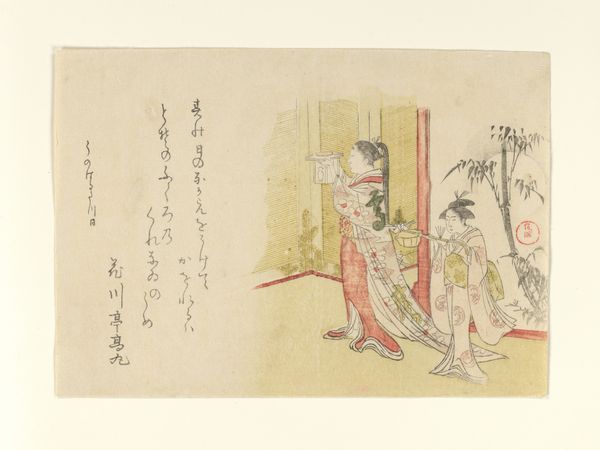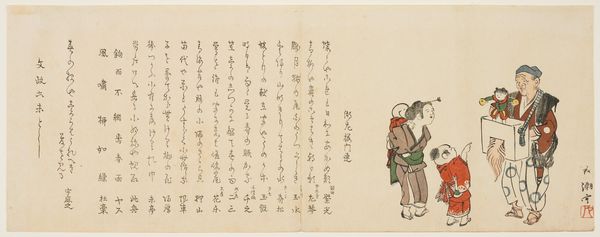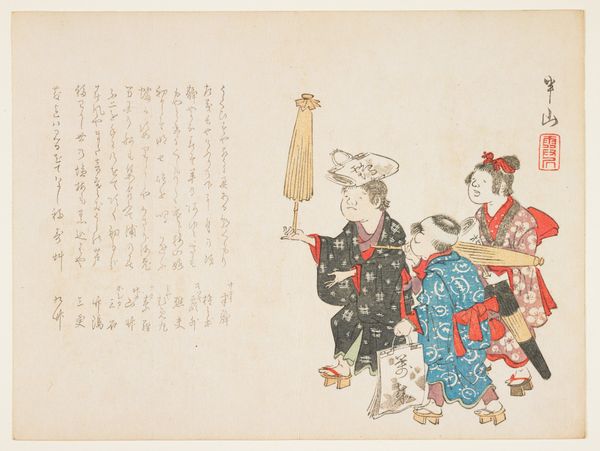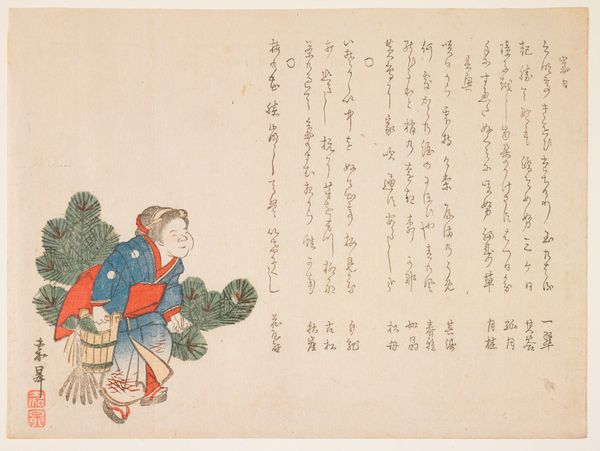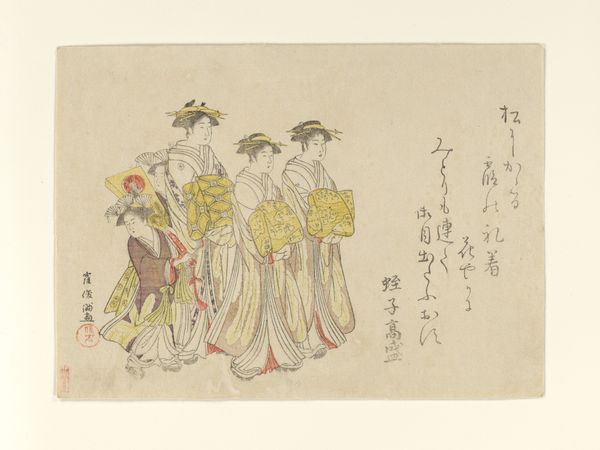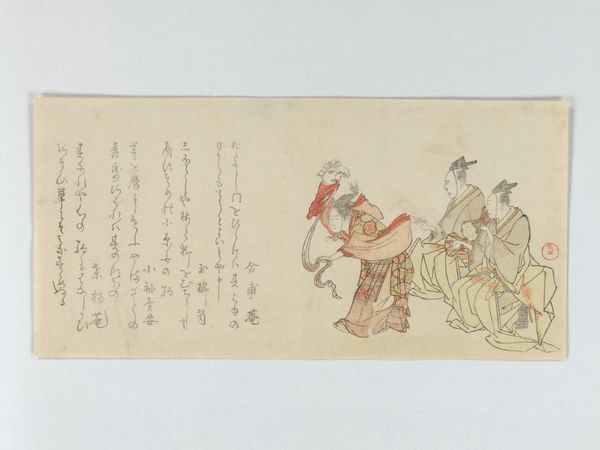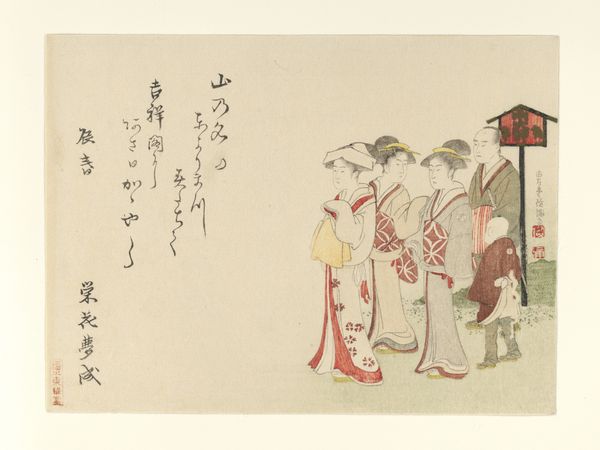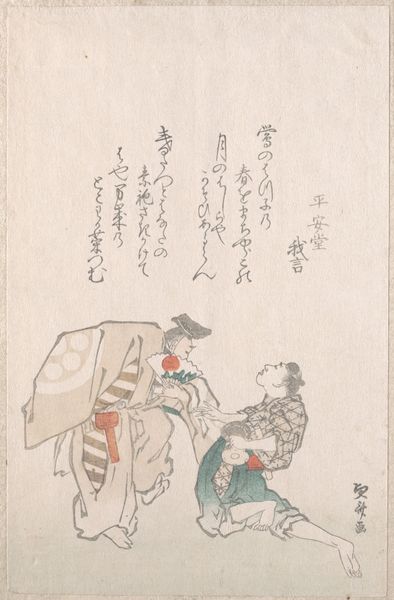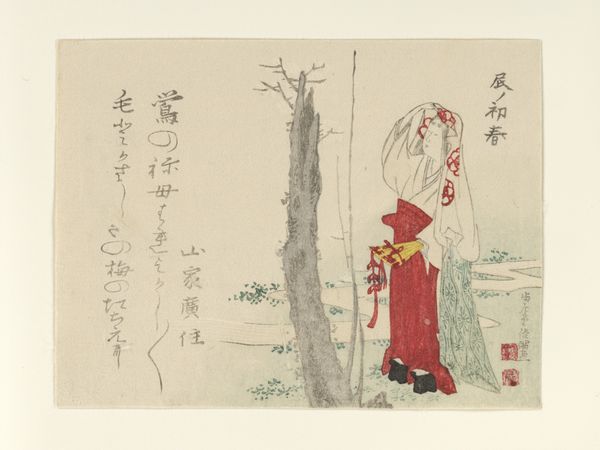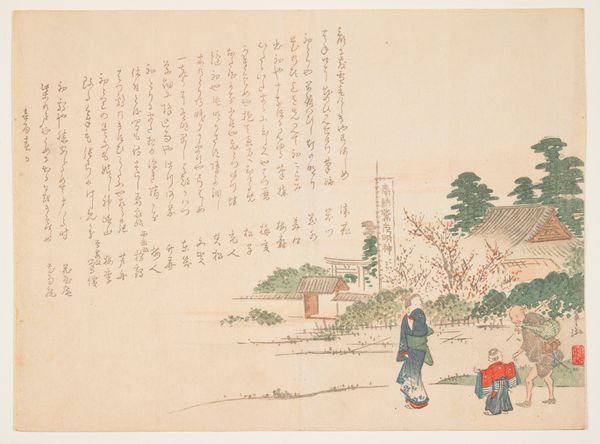
print, paper, ink, color-on-paper, woodblock-print
#
narrative-art
#
ink paper printed
# print
#
asian-art
#
ukiyo-e
#
japan
#
figuration
#
paper
#
ink
#
color-on-paper
#
woodblock-print
#
group-portraits
Dimensions: 7 1/8 x 9 3/4 in. (18.1 x 24.8 cm) (image, sheet)
Copyright: Public Domain
Curator: This cheerful woodblock print, created in 1866 by Miyake Eisai, is titled "Children in Festive Attire". You can find it here at the Minneapolis Institute of Art. What are your first thoughts? Editor: It has such a lighthearted feel! The composition is simple, yet it effectively captures a sense of playful innocence. The colors are vibrant for what I expected of the era, given it's about 160 years old. Curator: The image depicts children dressed for a festival, each carrying lanterns and fans. These objects are deeply symbolic, aren’t they? The lantern illuminates not only physical space but also represents hope and guidance, while the fan suggests a connection to courtly traditions. Editor: And consider the cultural context. During the Edo period, festivals were a crucial part of community life, acting as an occasion for release, social cohesion, and even subtly contesting authority. These weren’t simply quaint celebrations, but very deliberate staging grounds. Curator: Indeed. The vibrant attire speaks volumes too. The specific patterns and colors would signify social status, perhaps even aspirations. They offer hints about the children's families and the societal roles they were expected to fulfil. Red for warding off evil, blue signifying serenity, it is all interwoven! Editor: It's interesting how Eisai chose to portray the children with such direct gazes. They aren't idealized, but rather presented with a charming naturalness, a clear break from traditional portraiture aiming to venerate upper classes. It democratizes representation by directing our gaze towards children as subjects of social life, not just offspring of privileged families. Curator: Absolutely. And that calligraphic text beside them on the paper? That isn’t merely decoration. Those written verses offer insights into the festive mood and may relate directly to the occasion these children were partaking in. The composition uses this to anchor these children in a shared history of celebratory language and memory. Editor: Seeing this today allows us to glimpse into the lives of everyday people from a bygone era. Beyond the beauty, this print stands as evidence of childhood within shifting cultural and political realities of Japan’s past. Curator: A lovely summation. The beauty, as always, rests within these subtle narratives that connect to the larger social sphere. Editor: Yes, this print demonstrates how we may understand our own world differently. Thank you for exploring this piece with me.
Comments
minneapolisinstituteofart almost 2 years ago
⋮
Accompanied by their mother, two young girls are on their way to a hatsuho festival, as noted in some of the accompanying poems. Hatsuho, literally "the first ears of rice," is an annual harvest celebration held in early autumn. People gather at a local shrine or temple and make offerings of food and sake to the gods. The procession of a mikoshi, a portable shrine, or dance and music performances sometimes follows the rite. Here, the girls' cheerful countenances and colorful attire, especially the older girl's flower-adorned hat, conveys the celebratory nature of the occasion. Holding red lanterns and white fans emblazoned with butterflies, the girls seem ready to join the festival procession.
Join the conversation
Join millions of artists and users on Artera today and experience the ultimate creative platform.
